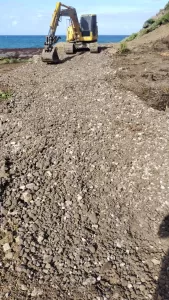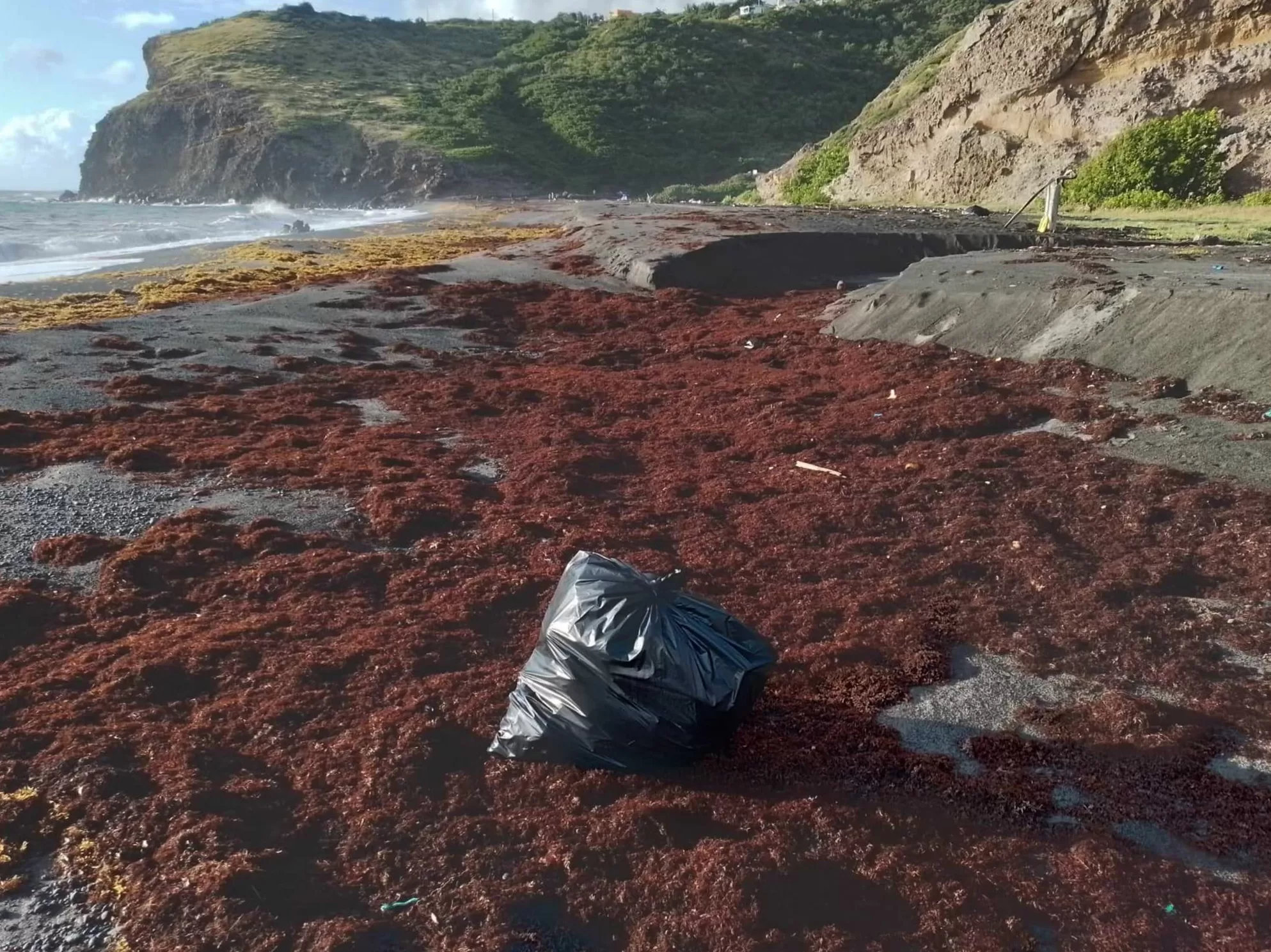The once secluded Marguerita Bay is now an inviting haven for residents and visitors alike, thanks to extensive government works and a spirited community clean-up.
The Ministry of Agriculture, Housing, Lands and the Environment completed excavation works for a newly improved access road and drainage systems on 22 March.
This will allow for easier transportation of waste from the black sand beach, and ensure the preservation of Montserrat’s natural landscape, a government press release said.

Minister Crenston Buffonge described the works as a “pivotal moment” in ongoing efforts to promote sustainable development and environmental stewardship.
“By improving the access and waste management infrastructure, we are fostering a cleaner, more accessible Marguerita Bay for members of the community and visitors alike,” he said.
Following the excavation, on 23 March, more than 30 volunteers took part in a beach clean-up to restore the striking beauty of the beach and raise awareness about environmental conservation.
Fayre Ryan, who led the event in collaboration with Victory Services and Shamrock Moorings Plus, said it exemplified the power of community collaboration in preserving the natural environment.
“Through initiatives like these, we can instil a sense of responsibility and pride in caring for our island’s precious ecosystems,” she said.
Premier Joseph E Farrell, who joined in with the beach clean-up, said the enhancement project highlights the efforts of both the government and community to revitalise Montserrat.
“By working together, we can ensure that Montserrat remains a wonderful place to live in harmony with nature,” he said.

The ministry, in a Facebook post, said most of the waste on the beach is not generated locally but is washed ashore by ocean currents.
This beach is also impacted by sargassum seaweed, but Montserrat has not yet experienced a major problem with it, so it is left on the shoreline for wildlife to forage for food, the ministry said.
“That is also why it is imperative that we remove the plastic trash from in between the seaweed as it is sometimes consumed as food, or birds, turtles and other marine animals get caught in discarded nets.
“Sargassum does have other positives. At sea, the sargassum raft attracts fish and fishers take advantage of this,” the environment ministry continued.
It added that sargassum can be used as fertiliser, but would initially have to be processed because in its natural form, it may have some undesirable elements.
Research is also looking at combining sargassum and other materials into making bricks and pavers, the ministry concluded.
More than 20 compostable bags – which can each hold 45 gallons – were filled during the clean-up.





